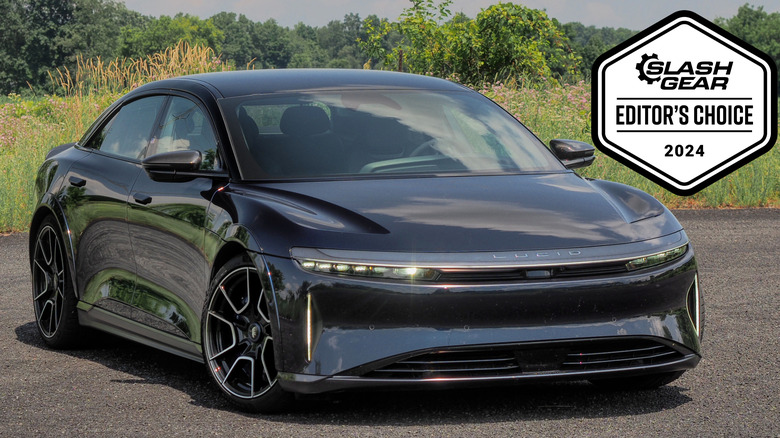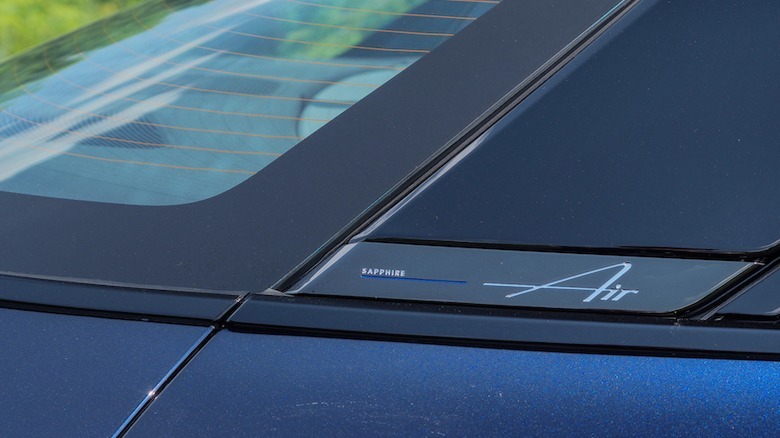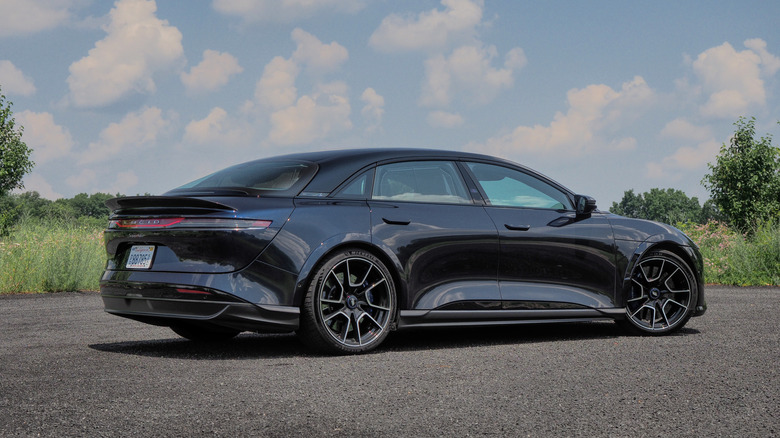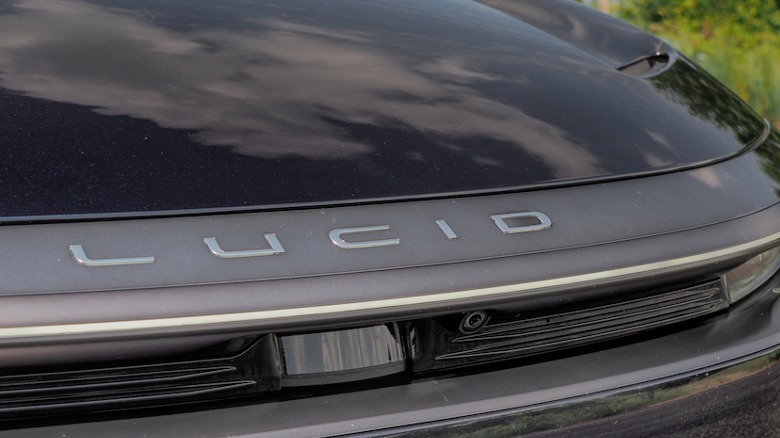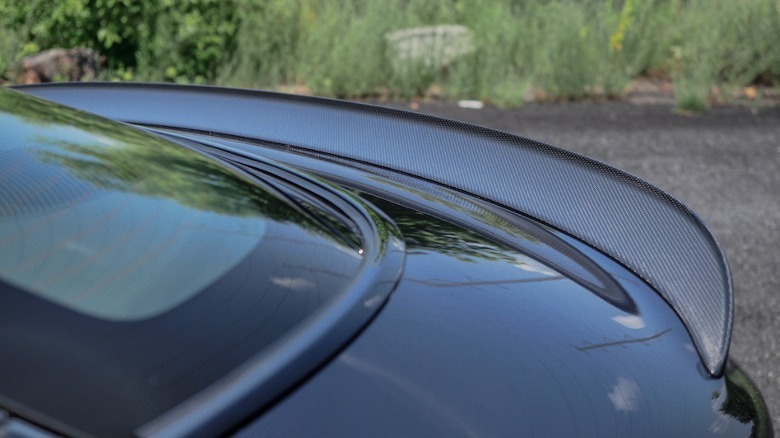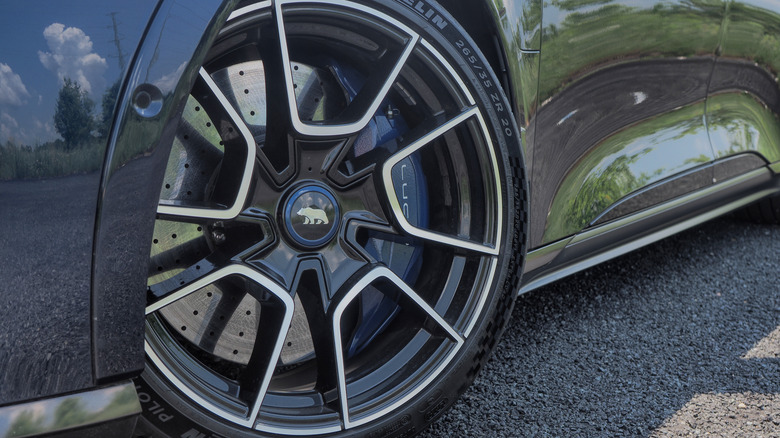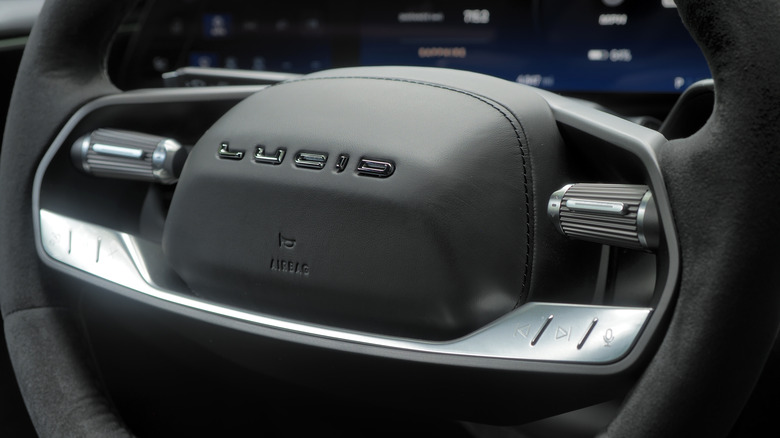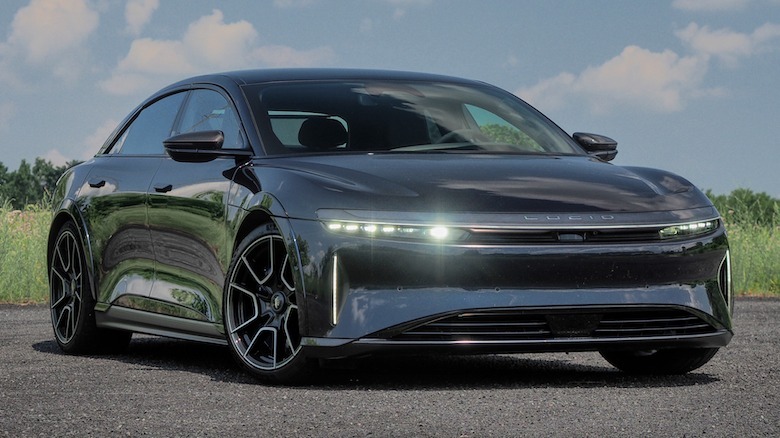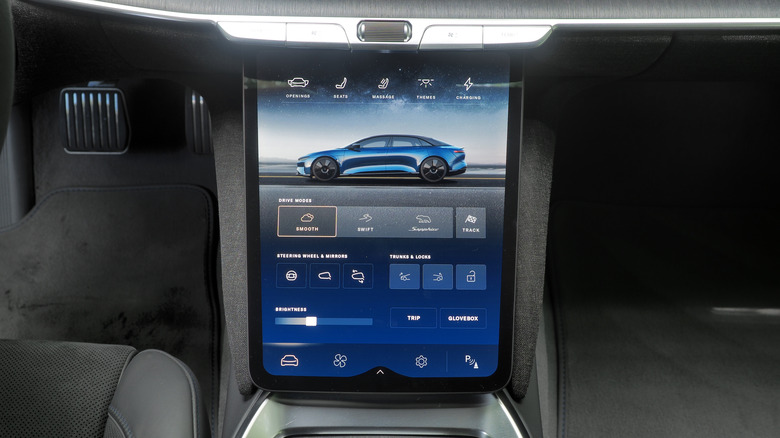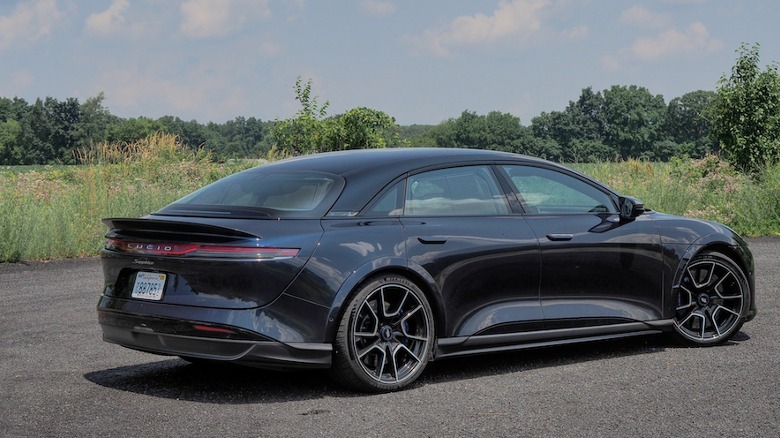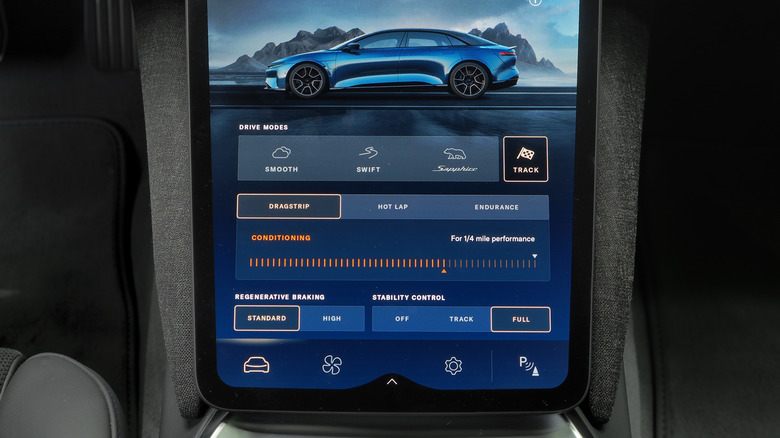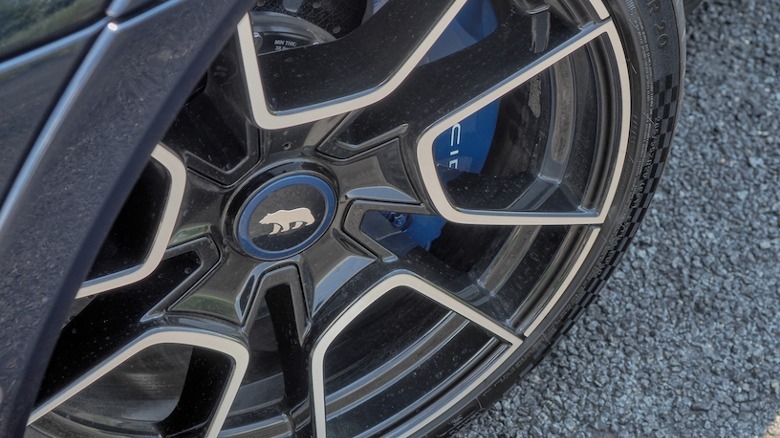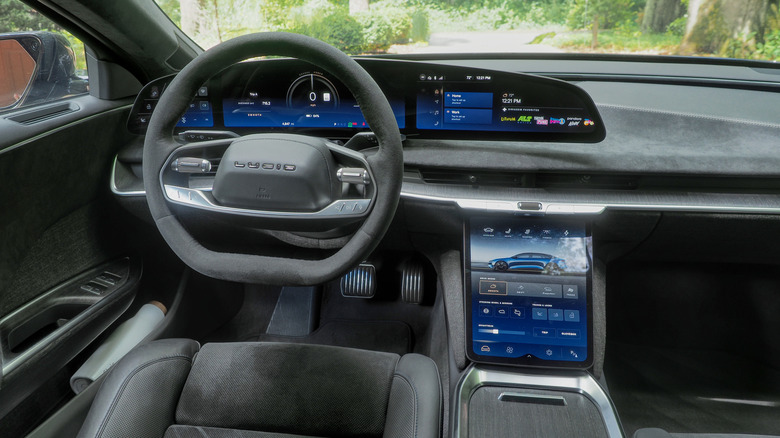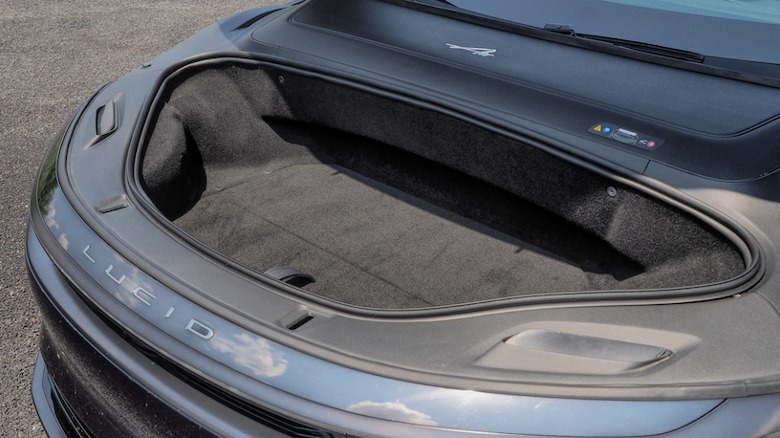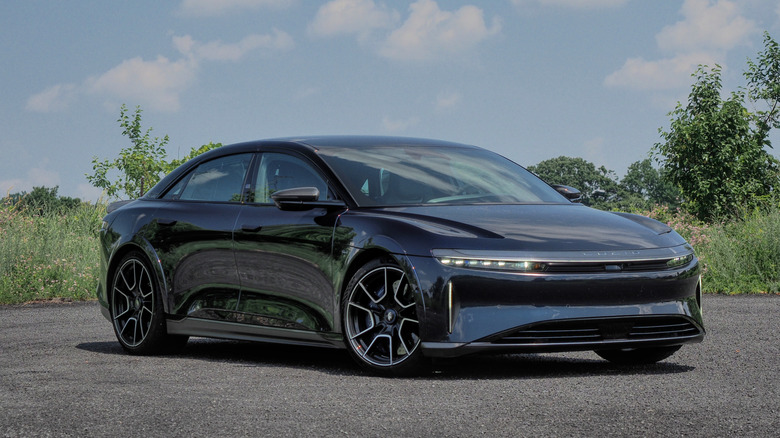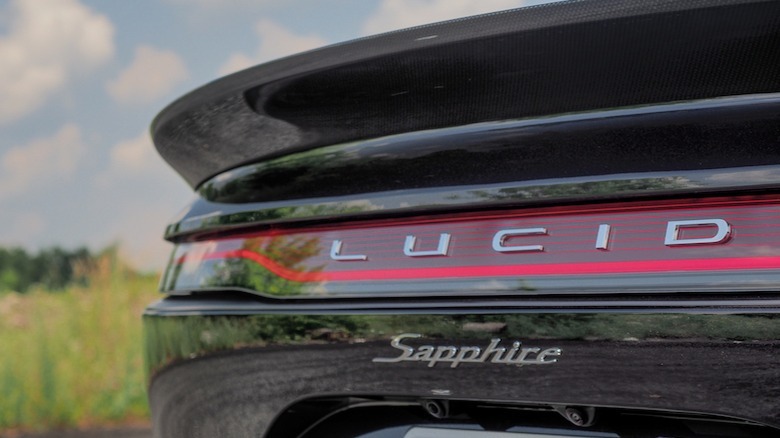Lucid Air Sapphire Review: $250,000 Gets You More Than Just 205 MPH
- Astonishing performance
- Massive range
- Cosseting cabin
- Handsome style
- It’s a quarter of a million dollars…
- …but it’s too subtle to shout about that
I did a lot of giggling in the Lucid Air Sapphire. Not because this 1,234 horsepower electric luxury sedan is anything less than brutally sincere regarding its performance goals — which include a 205 mph top speed, despite 427 miles of potential range — but because it's hard to take life too seriously when you're driving something capable of 0-60 mph in 1.89 seconds.
With a price tag of a quarter of a million dollars, though, the Air Sapphire can't simply be an electric trebuchet intended to hurl you and up to four of your closest friends and family toward the horizon. Nor, for that matter, can it justify any shortfall in creature comforts or even practicality as it delivers boggling figures like an 8.95 second quarter-mile, or 0-200 mph in just over 17 seconds.
Look, nobody asked Lucid to go all-out and make the Air Sapphire. Nobody really complained that the already-wickedly-fast Air Grand Touring was too sluggish or unresponsive to satisfy an eager driver. This challenge of a six-figure supercar masquerading as a cosseting sedan was all self-inflicted: has Lucid accelerated right into hubris?
Subtle on the outside
Lucid is keen to make clear that Sapphire isn't just a single model, but a performance brand with broader ambitions. Think AMG to Mercedes-Benz, or M to BMW. There's a new Sapphire badge on the trunk, under the Lucid logo, and a smaller one at the base of the rear pillar. Subtle, certainly, for something straddling the worlds of sports sedan and supercar.
In fact, if there's a criticism to be leveled at the Air Sapphire's design, it might be that Lucid's most extravagant EV is still pretty surreptitious. There's carbon fiber for the side mirror caps and the small (but aerodynamically-effective) rear spoiler, plus Sapphire-specific wheels — with optional aero covers — and you can only have the handsome Sapphire Blue metallic paint with this particular model.
All the same, only the most eagle-eyed EV spotter will likely be able to tell the difference, and there's no significant increase in overall presence to go with the significant uptick in power.
Whether that's an issue depends on whether you want to stand out or not. And the Air is, even some time after its initial launch, still enough of a rarity on the road that the sleek sedan turns heads from lack of familiarity alone.
Monstrous where it counts
Your body isn't ready, when you hit the Air Sapphire's accelerator in earnest. You might think it is; you might brace for the rush of acceleration you know is coming, and even — if you're feeling generous — warn your passengers of the reshaping forces that are imminent. Problem is, when rational meets instant electric torque, the winner is the one with the most electrons.
In fact, a more pertinent question is whether the road ahead is ready: the Air Sapphire has a talent for making long stretches of asphalt feel a whole lot shorter. If you want the very fastest, benchmark-setting speed, then you'll want to pause, hit the "Track" button on the central touchscreen, and choose the "Dragstrip" option. Then wait a short time for the EV to optimize its drivetrain and unlock those full 1,234 horses.
That preconditioning is much faster than, say, the several minutes a Tesla can take for its Plaid power to be ready, but unless you're on an actual track it's hard to say it's actually necessary.
How much power is too much power?
The Air Sapphire is never, ever lacking power. Not when you're whipping the unexpectedly deft sedan around back roads, eyes wide and body pressed into the leather and Alcantara seats. Not when you're on the highway, and a sliver of an overtaking gap opens.
In "Smooth" — the most restrained, "sedate" drive mode — the trio of motors are tuned for 767 horsepower. That's more than a Porsche 911 Turbo S, more than a Lamborghini Huracán STO. Switch to "Sapphire" mode, and you get 1,121 hp to play with. Not quite what "Dragstrip" mode provides, but more than the 1,003 hp in "Hot Lap" (where the drivetrain is chilled for a single, high-power lap), or the 767 hp in "Endurance" (where you trade some power for back-to-back track sessions).
The variations here — particularly between the regular drive modes, of "Smooth," "Swift," and "Sapphire" — are more about adaptive suspension and torque vectoring configurations, and the responsiveness of the pedals and steering. In fact, though the Air Sapphire's blistering straight-line acceleration is gleefully giddying, it's what happens when that first corner arrives, so rapidly, that makes you appreciate Lucid's efforts the most.
Grip, grip, and more grip
This is not a light car, at just north of 5,300 pounds, even if the low-slung 118 kWh battery pack means its center of gravity is close to the road. That it doesn't just blunder through turns, but scythes is a testament, then, to torque vectoring, suspension, and tires.
There are stiffer anti-roll bars, front, and rear springs; new bushings and bump stops; and extra camber front and rear working with the custom Michelin Pilot Sport 4S rubber — a single formation designed, it's worth noting, for both speed and everyday use — and Bilstein DT Sky 2-way adaptive dampers that've themselves been revamped for Sapphire duty specifically. To that, add the pair of rear electric motors, compact but potent. These can bias power to the left or right wheel, depending on traction demands.
In "Smooth" the Air Sapphire is calibrated for stability and the manners you'd expect from a luxury sedan. "Swift" and "Sapphire," though, introduce a giant's hand shoving the rear of the EV left and right as you saw at the wheel. There is something otherworldly about it, something vaguely superhuman: a sense that physics has, in return for your quarter-million-dollars, been placed on hold for a moment.
What sort of daredevil are you?
Torque vectoring delivers an appreciable impact on how the Air Sapphire drives, but it also has a simultaneous effect on how you feel as a driver. Some wickedly fast cars are the performance equivalent of dangling off the edge of a cliff: abject terror is part and parcel of the overall experience. Lucid's flavor of excess feels far more approachable, magnifying even fledgling talents at the wheel, without the sense that the Air wants to kill you in the process.
It does that, notably, without resorting to heavy-handed traction control and stability settings. These can, if you're feeling brave or well-insured, be switched down to "Track" mode — allowing for more slip and rotation — or "Off" altogether (though, rather than shutting off the computers completely, that instead dials them back to the point that drifting rather than just igniting the Pilot Sports is the outcome of enthusiastic driving). Oh, and there are no fake engine sounds.
When it comes to slowing, meanwhile, beefy carbon ceramic brakes shed weight (almost 50 pounds, in fact, versus the regular iron set on the Air) and haul with alacrity, courtesy of vast discs clamped by a whopping 10 pistons at the front and four at the back. Seamlessly blended regenerative braking — mustering up to 250 kW — means you get to avoid feeling profligate as you cut speed.
Serenity after speed
And then, bizarrely, the Air Sapphire becomes a very different car. Despite the new Alcantara touches, the cabin is the same, spacious, on-the-tasteful-side-of-minimal affair we've seen on other Lucid trims. The same dual touchscreen interface (with wireless smartphone projection), the same pared-back selection of physical controls for things like volume and HVAC adjustment, and the same ample room for passengers and cargo in the front and — despite the dual rear motors — rear trunks.
There's also, a little comically, the same propensity to small but tedious electrical gremlins. Door handles that once refused to unlock and pop out when I approached with the key fob, for example, forcing a message to Lucid so that they could open the Air remotely from the app and let me power it up with a PIN. Had it been my car, of course, I could've used the app myself, but whether it was a dead key battery or something else to blame, the Sapphire was tight-lipped on explanations.
Over-the-air (OTA) updates will undoubtedly continue to polish the experience. What doesn't really need improvement is the Air Sapphire's genuinely astonishing range. Where other potent EVs take it as given that a trade in driving distance is inevitable for an uptick in performance — whether relatively cheap, like the Hyundai Ioniq 5 N, or expensive, such as Porsche's Taycan GTS — Lucid's 427 miles eschews such concessions.
Lucid Air Sapphire Verdict
The Air Sapphire feels like it's on a mission to collect all the most melodramatic adjectives: shocking, visceral, and undoubtedly addictive. The (not-so-secret) secret, though, is that Lucid's regular Air does a good job of grabbing that hyperbole, too. Even the Air Pure — the most affordable model, less than a third of the price of the Sapphire — can deliver that organ-rearranging sense of pace in a straight line. Not to mention get you into serious legal peril should you be tempted to explore the upper echelons of its capabilities.
Rationally, then, you could question the point of the Sapphire at all. Especially when you factor in its $250,500 price: more than double that of an Air Grand Touring that'll still do 0-60 mph in 3.0 seconds, and is potentially rated for over 500 miles of range.
All of these things can be true, and yet the Lucid Air Sapphire can still justify its existence. Not an EV aping the gasoline experience, but instead unapologetically futuristic and with clear justifications for each decision made in its creation. It's a showcase, for electric vehicles generally and for Lucid Motors specifically, but more than that a reset for assumptions that you need to compromise on either luxury or performance. And if it's more car than any of us really need, well, maybe that's just the key to a successful halo.
